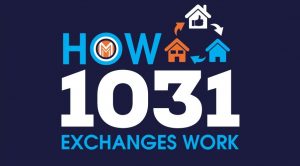The Affordable Solution – HomeReady and Home Possible
Saving to buy a home while you watch prices and interest rates increase feels like an impossible goal. You have little or no money saved and feel like homeownership isn’t in the near future for you. You checked into FHA loans and learned it only requires 3.5% of the purchase price as a down payment. But then you learned about the high, and permanent, mortgage insurance premiums. No thanks. So what other options do you have?
Don’t give up on your dream of homeownership! There are loan programs for creditworthy individuals with just 3% down payment.
The Affordable Solution
Fannie Mae’s HomeReady and Freddie Mac’s Home Possible Mortgage, are making it easier for people to buy a home and start building equity. These loan programs are designed to help low to moderate income borrowers get into a home with little to no money of their own. The minimum down payment for each program is as low as 3% of the purchase price, and there’s a lot of flexibility for where you’re allowed to get that money.
For both Freddie and Fannie’s programs, the down payment can come from a gift, a community second mortgage, or a down payment assistance program – when available. These sources can also cover your closing costs. A total of zero dollars need to come from your own money.
The bottom line is that by using these programs, you can potentially own a home even if you haven’t saved a dime.
Who/What Qualifies
Buyers and property types may qualify under these guidelines:
Embracing Mortgage Insurance
Private Mortgage Insurance (PMI) is required on loans with less than 20% down payment. This essentially is an insurance policy that protects the lender up to a certain percentage of loss if you were to default on your home loan. Both HomeReady and Home Possible mortgages require you to pay this mortgage insurance premium, but the cost is often less than both a conventional 5% down program and an FHA loan. And unlike an FHA loan, you may be eligible to drop the mortgage insurance once there is 20% equity in the property. Equity is accumulated by a combination of loan repayment and property appreciation.
Getting Started
No matter where you live, these loan programs represent a great opportunity in today’s real estate market. The downside is that not everybody can qualify. It’s important to speak with a seasoned mortgage professional to help structure a plan that best fits your current financial situation and future goals as a homeowner. While the Fannie Mae HomeReady and Freddie Mac Home Possible Mortgage are fantastic loan options, everybody’s situation is unique. There is an abundance of programs available, and a good loan officer will provide you with the guidance you deserve. Call for your free consultation and pre-approval today.
Written By: Chris Ulrich – United Home Loans
NMLS# 215735









